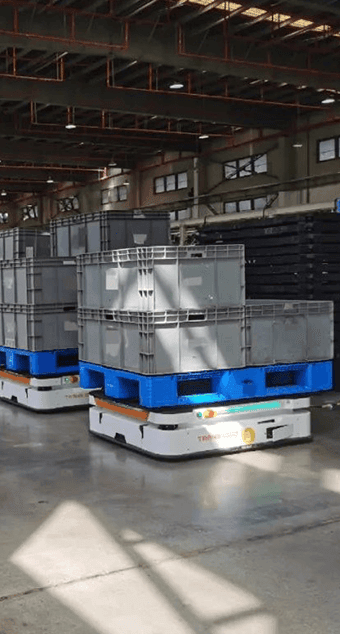The world of logistics is undergoing a profound transformation with the advent of intralogistics automation. This cutting-edge technology has revolutionized the way goods are handled, stored, and transported within warehouses and distribution centers. With its ability to streamline operations, increase efficiency, and reduce costs, intralogistics automation is becoming an indispensable tool for businesses worldwide.
The Rise of Intralogistics Automation

Intralogistics automation encompasses a wide range of technologies such as robotic systems, artificial intelligence (AI), machine learning, and Internet of Things (IoT) devices. These advancements enable seamless integration between different components in the supply chain ecosystem. By automating repetitive tasks like picking, sorting, and packing, companies can significantly improve productivity while minimizing errors.
Youibot: Pioneering Intralogistics Automation Solutions
One notable player in the field of intralogistics automation is Youibot. As a leading provider of intelligent mobile robots for industrial applications, Youibot offers innovative solutions that optimize warehouse operations. Their autonomous robots are equipped with advanced sensors and navigation systems to safely navigate through complex environments while efficiently completing assigned tasks.
Youibot’s robots can handle various material handling operations such as pallet transportation, order fulfillment, inventory management with precision and speed. They seamlessly integrate into existing warehouse management systems (WMS) to provide real-time data insights for better decision-making processes.
Mobile Autonomous Robots: Transforming Warehouse Operations
mobile autonomous robots have emerged as game-changers in intralogistics automation due to their versatility and adaptability. These robots can effortlessly move around warehouses without requiring fixed infrastructure or modifications to existing layouts.
Equipped with advanced perception capabilities like computer vision and LiDAR, mobile autonomous robots can navigate through dynamic environments, avoiding obstacles and ensuring worker safety. They can efficiently transport goods from one location to another, optimizing the flow of materials within the warehouse.
Furthermore, these robots are capable of collaborative operations with human workers. By taking over physically demanding tasks and allowing employees to focus on more complex activities, they enhance overall productivity while reducing the risk of injuries.
The Future of Intralogistics Automation
Intralogistics automation is poised to reshape the logistics industry in unprecedented ways. With continuous advancements in technology and increasing demand for efficient supply chain management solutions, we can expect further integration of AI, machine learning algorithms, and robotics into intralogistics processes.
This transformation will lead to enhanced operational efficiency, reduced costs, improved accuracy in order fulfillment processes, and ultimately better customer satisfaction. As businesses strive to stay competitive in a rapidly evolving market landscape, embracing intralogistics automation will be crucial for success.

